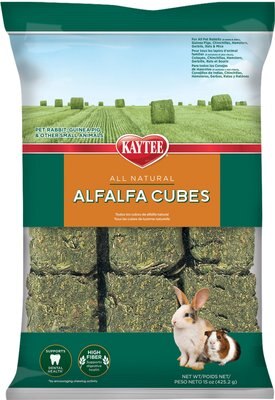I have no clue what you are referring to. Cubes? 2"x2" compressed hay commonly sold in 50# bags? No. Just regular small bales that average 50-60#. Decent amount of leaf and small fine stems. Cubes tend to be made out of mature inferior hay that just doesn't have the eye appeal to be sold in baled form. It will have very little leaf and you will pay about 50% more.
I think Morrigan was referring to this type of dried/compressed alfalfa cube that they sell for small animals

I actually think this would be a hit for wintertime when they may spend more time penned up. It will make them work for their greens/keep them busy.

